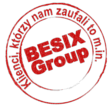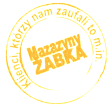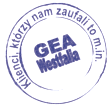Lift trucks
Lift trucks (also known as forklifts) are the most popular tread work machines. Popularly known as 'frogs', they are driven, among others, in warehouses, ports, both sea and air ports, production halls and many other places.
Forklift truck - general characteristics
It is a power-driven wheeled motor vehicle. Despite its small size, it is capable of carrying up to several tens of tonnes! The first models were developed as early as the 1920s by Clark and Yale & Towne Manufacturing.
Construction and components
- Motor (can be electric, mains or battery powered, petrol or diesel. It is rare to find other types of drive.
- Steel bogie frame.
- Wheeled chassis (usually consisting of three or four wheels).
- Counterweight, which is an additional load placed on the rear of the trolley to provide balance when carrying objects that overload the front of the trolley.
- Operator's cab. In this, in turn, you will find the steering wheel, pedals and levers to control the reach truck.
- Vertical mast. Mounted at the front of the trolley, it enables loads to be lifted and transported.
- L-shaped forks moved vertically by a chain. It is also possible to use grippers adapted for transporting, for example, barrels, cardboard boxes, snow ploughs and others.
- Safety grating to prevent the transported items from sliding onto the trolley operator.
- Carriage (faceplate) - a steel piece attached to the mast for the installation of forks and safety grating.
Basic breakdown of forklift trucks:
- platform trucks (loaded),
- Tractor (pull/push) trolleys - used to pull/push vehicles or trailers attached to them. The main parameter - pulling power,
- Lift trucks - used to lift a specific load only to a certain, low height to move it from one place to another. The main parameter - lifting capacity.
Front lift trucks
The rather long name describes a relatively simple concept. Well, we are talking about machines in which the weight of the load to be lifted equals that of a forklift truck. Off-road trucks are a subcategory of this type. The load is lifted by forks or other attachments.
Specialised trolley with variable reach
Also called a telehandler. They have a variable reach arm that allows even massive loads to be easily handled both vertically and horizontally and manipulated in space. The specialised forklift with variable reach has the ability to work on difficult terrain (e.g. construction sites), thanks to its 4-wheel drive and off-road pneumatic tyres. This type of forklift truck is most often found on large farms or construction sites, where its greatest advantage is the ability to handle loads on uneven surfaces.
High lift truck
Typically, a reach truck, as the name suggests, is used to transport large, often bulky loads to a height that exceeds the height of the truck cab itself. It is widely used especially in warehouses and logistics centres. Interestingly, this equipment is highly effective when working with "bulky" objects (boards, pipes, furniture components, etc.).
In addition, it also stands out:
- lift trucks with an internal mast not covering the load,
- lift trucks with an internal mast encompassing the load (fixed mast),
- internal mast lift trucks,
- platform lift trucks with internal mast,
- side lift trucks (single-sided),
- side lift trucks (two-sided),
- front-side lift trucks (two-sided),
- gantry lift trucks,
- lift trucks with the operator lifting the load.
Necessary authorisation
Specific state qualifications are required to operate forklifts. In this case, two categories are envisaged, which:
- entitles the operator to operate power-lift trucks and forklifts lifting the operator together with the load;
- entitles the operator to operate power-operated lift trucks in addition to boom trucks and forklifts lifting the operator with a load.
Training at ERGON
The ERGON Personnel Improvement Centre offers comprehensive training in the operation of lift trucks. The programme includes, among others:
- types and construction of equipment,
- operator activities before and after work,
- operator activities during operation,
- messages concerning the carriage of freight,
- technical supervision,
- rules for changing gas cylinders,
- practical exercises.
The following requirements must be met in order to register for classes:
- at least 18 years old,
- at least primary education,
- no contraindications to work as an operator.
We encourage you to take a look at what ERGON has to offer. We offer classes taught by experienced staff, modern educational standards and teaching aids. If you have any questions, please do not hesitate to contact us.

































